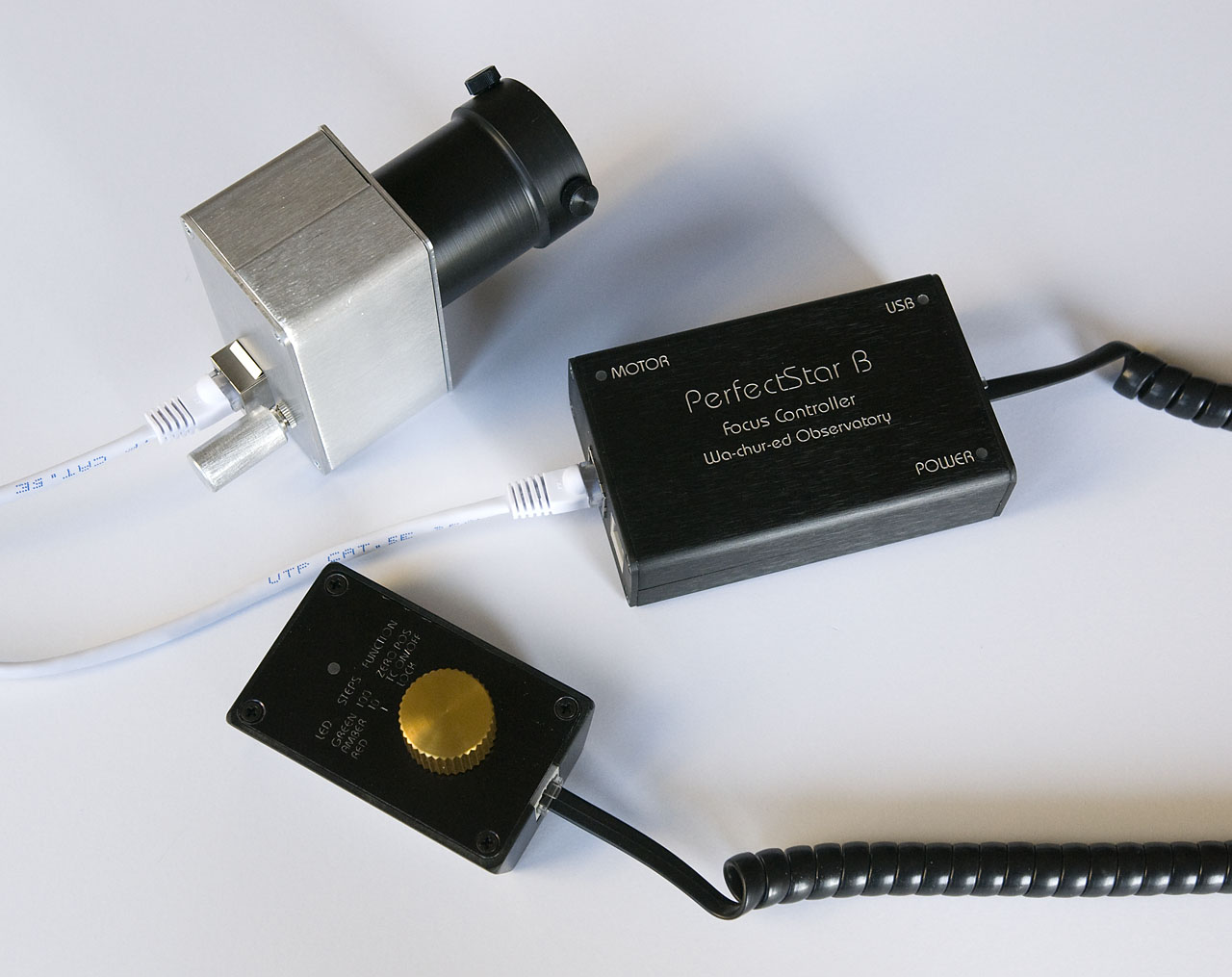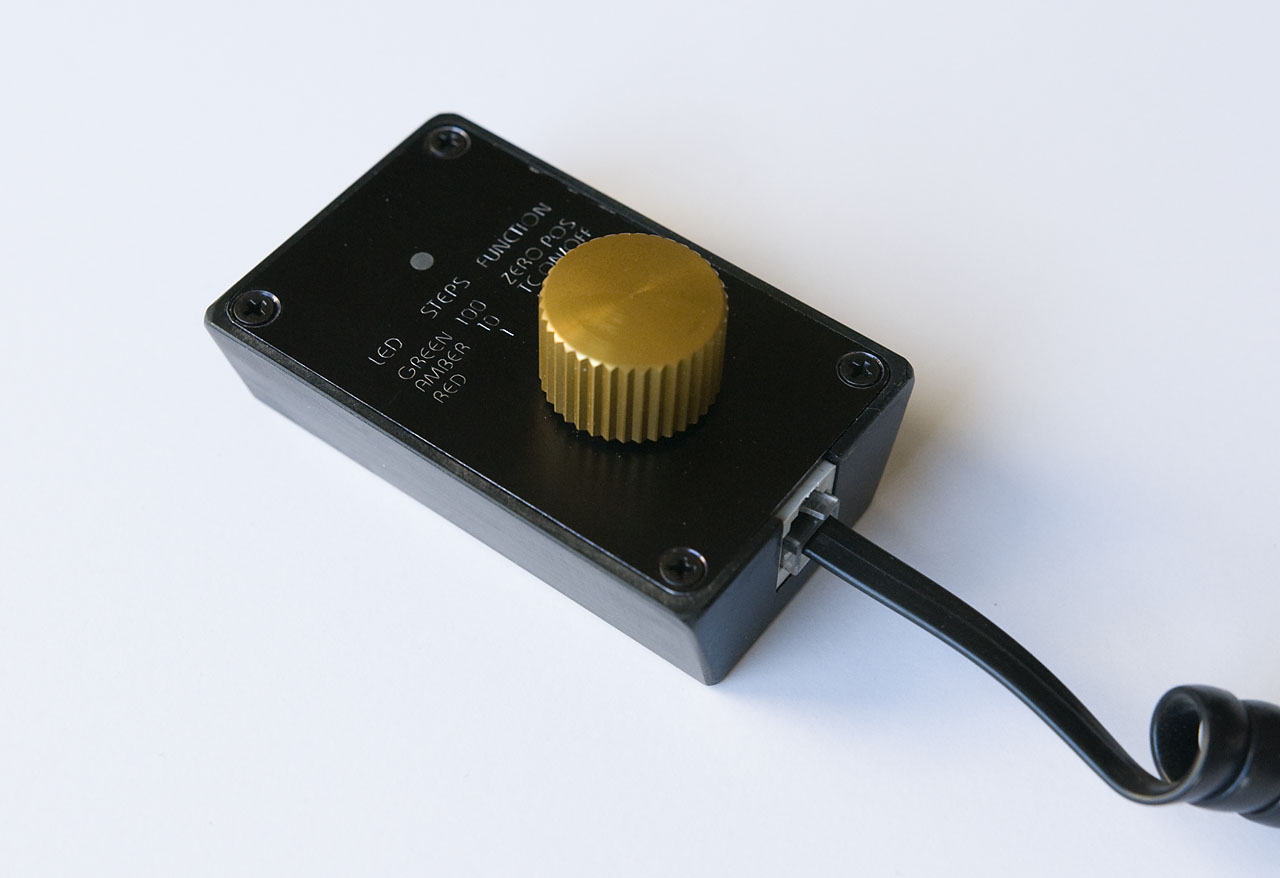I told you about PerfectStar B some time ago – it’s my new focus control system using bipolar motors instead of the traditional unipolar motors. And I had intended to put it on my website and start accepting orders back in September, but ran into some software issues that delayed the release just enough to push it into the busiest time of year, so I didn’t get around to updating the website until now, even though I have already shipped a couple of these to existing customers.
The “B” in the name refers to its use of/support for bipolar stepper motors, but I struggled a bit with the name because it’s not completely clear what it means, and could even be taken as a negative – as in “B list celebrities”. But if I had called it “PerfectStar Bipolar” it could have even worse connotations. And “PerfectStar 2” suggests that it is simply an incremental update. In fact, the classic PerfectStar is and will continue to be fully available and supported. They are different solutions to the same problem.
It is true that PerfectStar B (PSB) is an “upscale” model in addition to being a different type of motor controller. In addition to the many enhanced features associated with going to bipolar motors, this system uses more rugged construction (aluminum for the controller and motor enclosures), improved cabling, a really nice knob on the handset (literally just like the fine-focus knob found on many top quality telescopes), and engraved labeling rather than the adhesive (and only somewhat weather resistant) labels on the classic model.
The handset body has an aluminum top, but the body is made of a heavy type of plastic called Delrin (more generically, acetal). It is “sculpted” to fit the hand better and has a good “heft” to it, but it’s that beautiful aluminum knob that really gives it such a great feel. Of course, the whole rotary control is almost unique to PerfectStar. It combines the precision of digital control with the simplicity and familiarity of a traditional focus knob: As you turn the knob, the motor responds almost instantaneously to adjust focus in the corresponding direction, but detents in the rotary motion allow you to move in defined increments that are precise and repeatable. Pressing the knob in (like clicking a computer mouse) changes the increment for each step, and a tri-color LED indicates the current “speed” (number of motor steps per detent). In normal and fine focus speeds (10 steps and 1 step per detent, respectively) there is no discernible lag between the motion of the knob and the motion of the focuser.
The “fast” speed (100 steps per detent) does have a bit of lag, but this is used for coarse focus, where lag is not so important. As in the classic PerfectStar, there is also a 4th speed, but it works a little bit differently. In PSB, if you are in the “fast” speed and turn the knob slowly, the focuser moves precisely 100 steps per detent. But if you turn it quickly, such that the knob gets more than 2 detents ahead of the motor, it switches to a super fast mode that does 1,000 steps per detent. This super fast mode also uses a faster step rate, if that is enabled in the user settings. This makes it very easy and quick to get to an approximate focus position – there’s no need to turn the knob through dozens of rotations.
Of course, the handset is just one way to use the focus controller – and not the most interesting way! The supplied ASCOM standard driver allows PSB to be controlled through a great many different astronomy software applications. The new driver for PSB enhanced features to optimize controller parameters for each specific installation, with selections for speed, drive current, and “braking” current. And, of course, PSB includes the Permanent Focus feature of the classic PerfectStar.
Unipolar stepper motors are still the norm for focus control today. One of the main reasons that I originally went with unipolar motors was to be compatible with other manufacturers. That has worked out well – many of my PerfectStar Focus Controller customers use it with motors that they already had from other manufacturers. But as is often the case, backward compatibility can hold you back from improvements in technology. Today, only a couple of high-end systems are using bipolar motors for focus control (and PSB is compatible with those systems), but it is clear that this is the right direction, and now is the time.
PSB motors are priced the same as classic unipolar motor systems. Even though they are somewhat more expensive for me to make, some of the details of sourcing the motors and other components actually makes it more efficient. I haven’t decided on the final price for the controller. It is necessarily higher than the classic controller, but until I have built more of them I won’t know what the right price is, so I have decided to offer an introductory price of $199. In a few months there will probably be a significant price increase, but I don’t yet know how much it will be.
One thing I’m not too happy about is that I can’t find a cost-effective way to make the motors with a black (anodized aluminum) enclosure. Knowing that some people will want this, I am offering an optional black enclosure for a $20 increase in the price. If I sell enough of these, I’ll eventually be able to offer all motors in black at the standard pricing.

